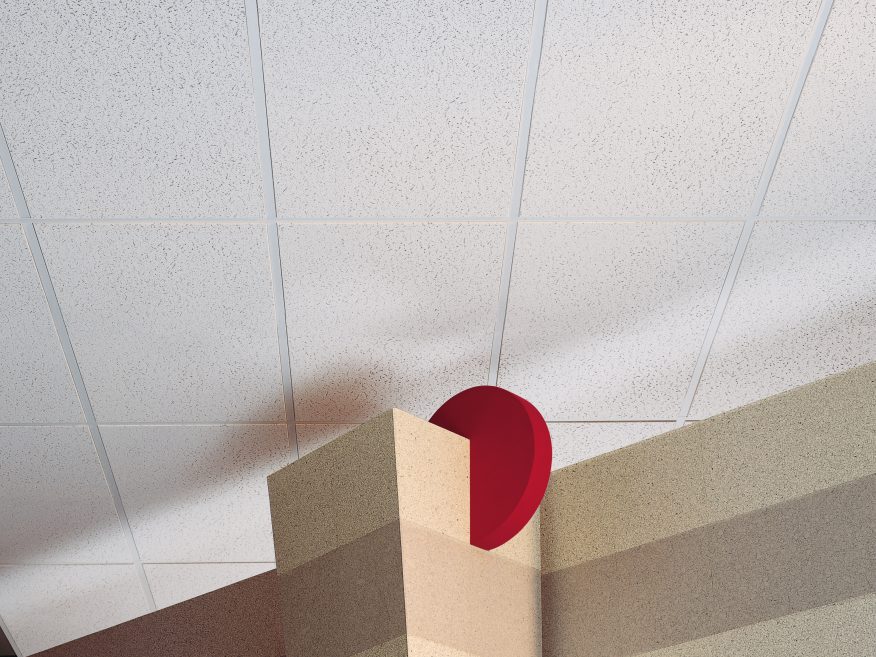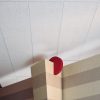Sign In
You're All Set
Welcome back! You are now signed in.
You have been logged out
You have been logged out due to inactivity
Forgot Password
Please enter the email address you used to create the account. We'll send you a link that lets you create a new password.
You're All Set
Please check your email. Click the link in the email to create a new password.
Reset Password
You're All Set
Success! Your password has been updated.
Change Password
You're All Set
Success! Your password has been updated.

Plateau™ Acoustical Panels
Great for value renovations Plateau™ Acoustical Panels provide good looks at an attractive price.
Key Documents & Design Files

Overview
Overview
Main Features
When budget is a consideration, Plateau™ Acoustical Ceiling Panels provide an attractive way to finish a ceiling. The mineral fiber panels have a square edge for quick transition.- Light reflectance – .85
- For use in grocery stores, administrative offices, mechanical rooms
Applications
- Administrative Offices
- Corridors and Hallways
- Grocery Stores
- Mechanical Rooms
- Restrooms, Utility Rooms and Loading Docks
- Stairways and Elevator Shafts
- Warehouses
Specifications
Performance
- Light Reflectance 0.85
- Mold & Mildew Resistance No
-
Fire Resistance
- Fire Rating Class A
-
ASTM E84
- Flame Spread 25
- Smoke Developed 50
- Fire Rating Class A
-
ASTM Type
ASTM E84
- Flame Spread 25
- Smoke Developed 50
- Fire Rating Class A
Sustainability
- GREENGUARD Certification Yes
- VOC Emissions Low-emitting
Physical Data
- Thickness (in.) 9/16
- Color White
- Edge Square Edge
- Panel Size 2 ft. x 4 ft.
- Material Mineral Fiber
Warranty
-
Warranty
USG Ceiling Solutions Warranty for Retail Applications (English) - WL1536PDF 339 KB
Documents & Files
Data Sheets & Specifications
| Data/Submittal Sheet (English) | PDF 2.9 MB |
Catalogs & Brochures
| System Catalog (English) | PDF 12.7 MB |
Installation & Technical Manuals
| Technical Guide (English) |
| Installation Guide (English) |
SDS, Certifications & Reports
| SDS (English) | PDF 215.1 KB |
| SDS (Spanish) | PDF 217.9 KB |
| Certificates (English) | PDF 1.1 MB |
Warranties
| Warranties (English) |
Ask a question
Our customer support team will get back to you as soon as possible.
Question Guidlines
- Questions should relate to this product specifically.
- For help with pricing, availability, or delivery, please call 800.874.4968 (Monday–Friday, 7am–6pm Central)
- All questions and answers follow USG’s Terms & Conditions.
- Your question and USG’s answer may be posted to this page in the future, but none of your personal info will be included.
q & a
-
Why is LR important?
When the proper type of lighting fixture is used with a high LR ceiling, there can be savings in both initial construction costs as well as long-term energy costs. The concept is to use the ceiling to reflect light back into the occupied space.
-
What does LR stand for?
LR stands for light reflectance. It is a measure of the percentage of light which is reflected off of a given panel surface. Typically, the whiter and smoother the ceiling panel, the higher the LR value.
-
When referring to ceiling panels, what is the meaning of type, form and pattern?
These categories refer to ASTM Test E 1264.
Type refers to the base material of the panel.
Form refers to the manufacturing process of the panel.
Pattern refers to the type of texture or pattern in the panel. -
What is the difference between Class A and Firecode® branded materials?
Class A signifies that a panel attained a flame spread index of 25 or less (based on 100 for untreated red oak) when tested in accordance with the Standard ASTM E 84. The Firecode® brand signifies that the panel has been classified as a protective membrane in a floor-ceiling or roof-ceiling assembly in accordance with the Standard ASTM E 119. All Firecode® protective membranes offered by USG have attained a Class A rating.
-
What is the difference between wet-felted and cast ceiling panels?
Wet-felted panels are typically mechanically perforated and fissured. They are very dense and more economical than other types of ceiling panels. Cast ceiling panels are non-perforated and are manufactured in a different “cast” process, hence its name, that enhances their surface appearance and provides excellent sound absorption and durability.
-
When hold-down clips are required, how much space should I leave between the clips, on the grid?
The recommendation for hold-down clip spacing is two clips per panel, centered on the grid, between the panels.
-
How many acoustical panel types does USG offer?
USG offers four major types of acoustical panels as well as Gypsum based panels for special applications. They are: Wet-Felted, Cast, "X" Technology and Fiberglass.
-
How far in advance can I order ceiling panel before installation?
Storage time of materials at the job site should be as short as possible, and environmental conditions should be as near as possible to those specified for occupancy. Excess humidity during storage can cause expansion of material and possible warp, sag, or poor fit after installation. Chemical changes in the mat and/or coatings can be aggravated by excess humidity and cause discoloration during storage, even in unopened cartons. Cartons should be removed from pallets and stringers to prevent distortion of material. Long-term (6-12 months) storage under uncontrolled environmental conditions should be avoided.
-
What is CAC?
CAC stands for Ceiling Attenuation Class. It is the measure of the blocking of sound through one ceiling plane, into the plenum above, and back through the other ceiling plane to an adjacent space.
-
Why would I use one ceiling panel type over another?
The different panel substrates provide panels with unique characteristics. The use of the different panels will vary based on specific needs and application.
-
Have a question?
Ask USGLet us do the research. We'll get back to you as quickly as we can.
-
Need help right away?
Call our Technical Support team at 800-874-4968 (Monday-Friday, 7:30 am - 4 pm Central).



